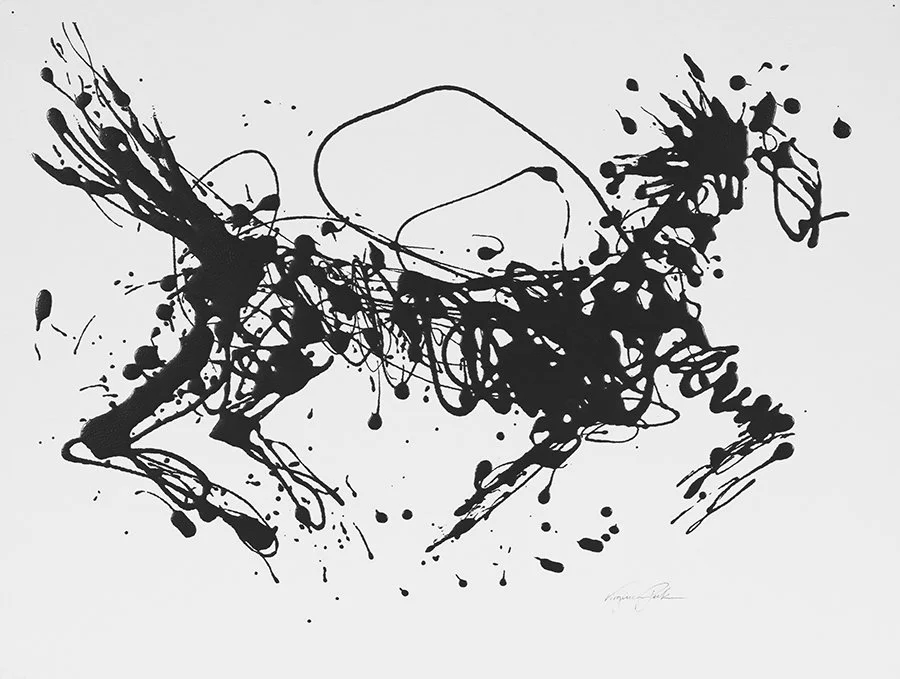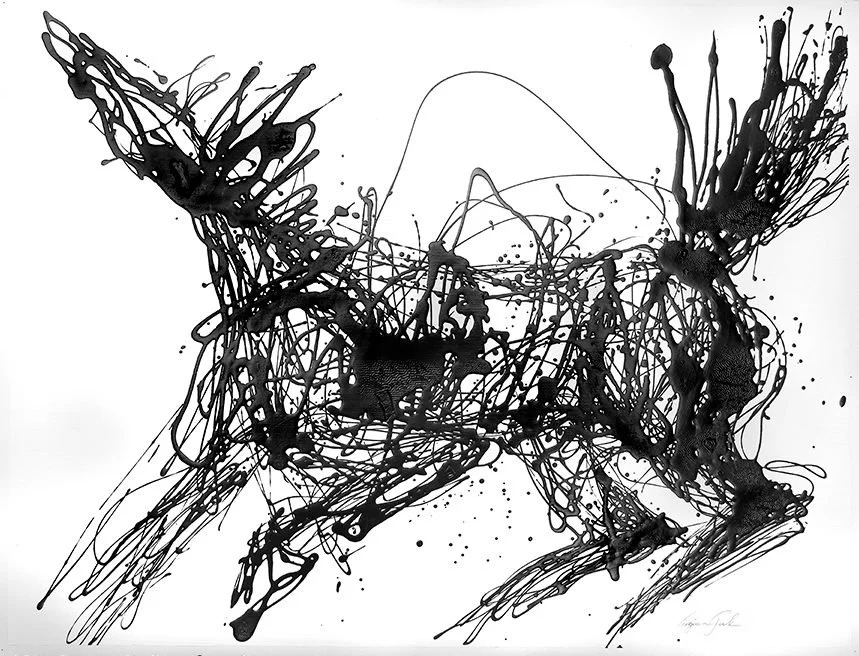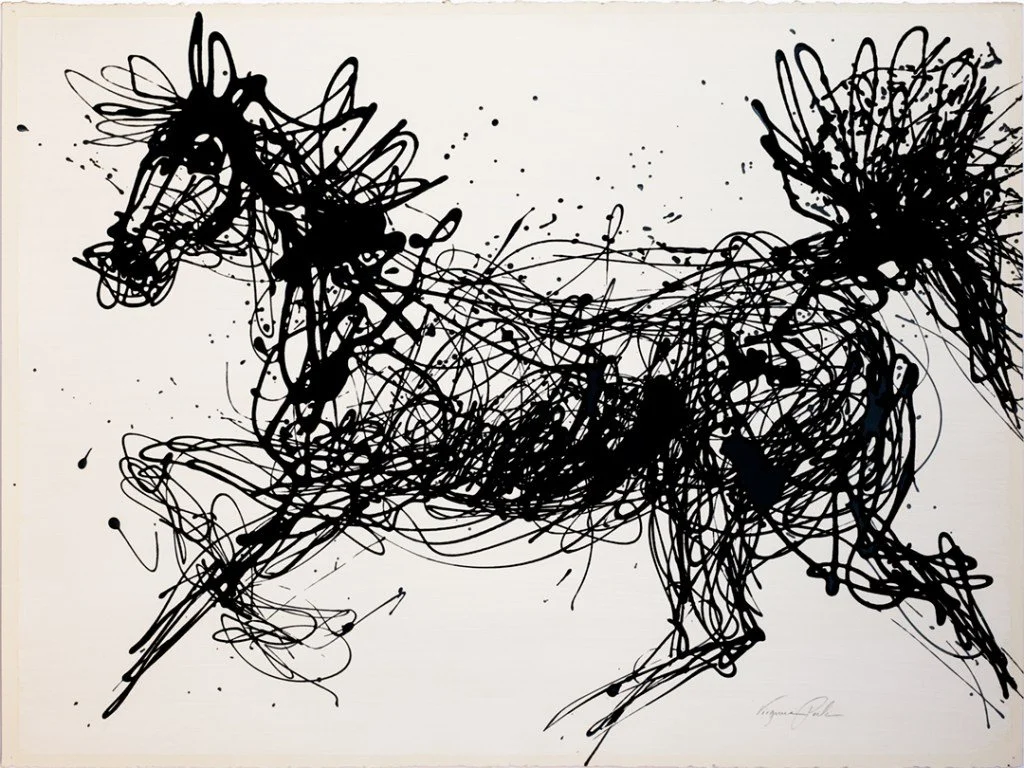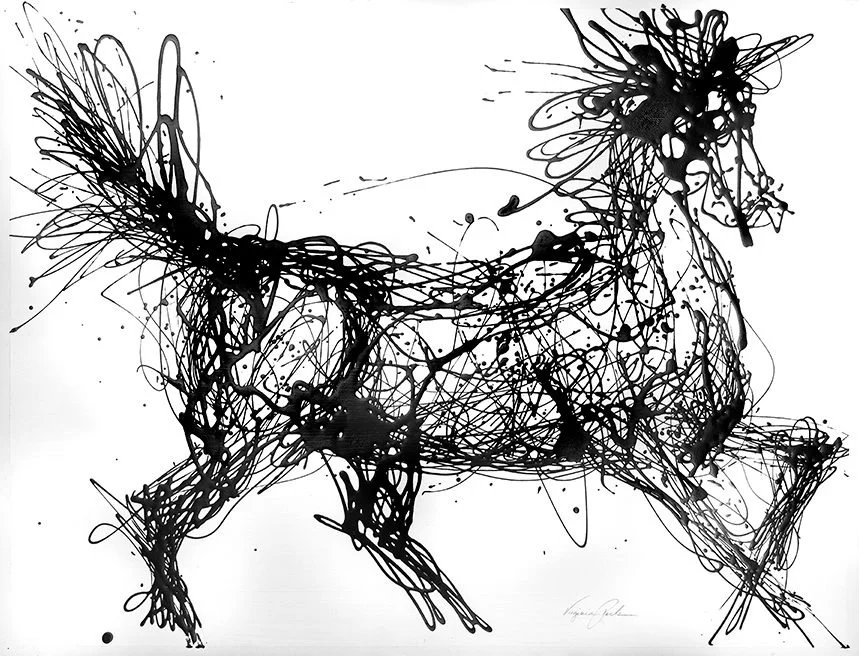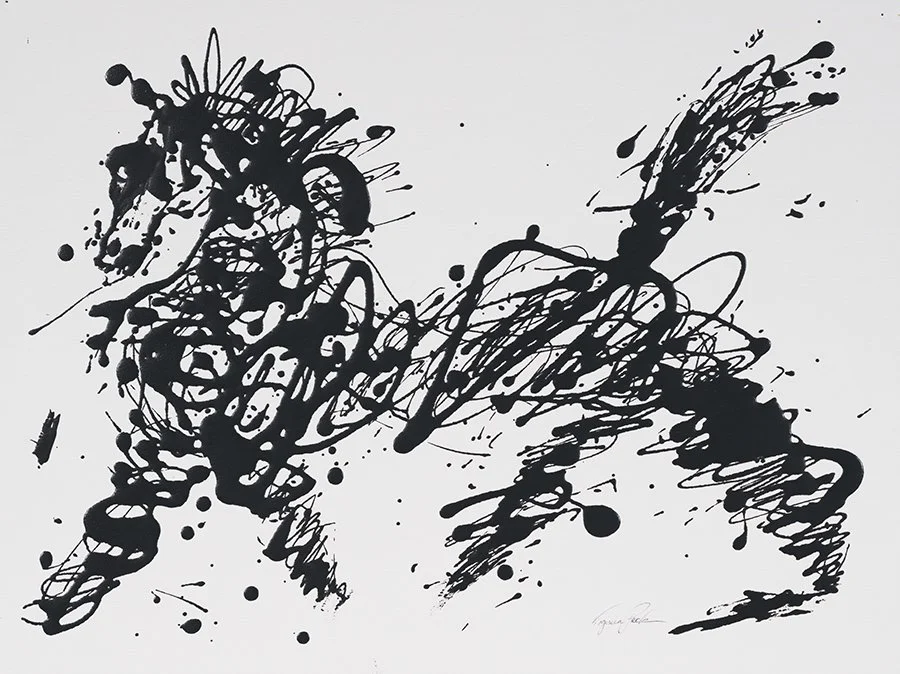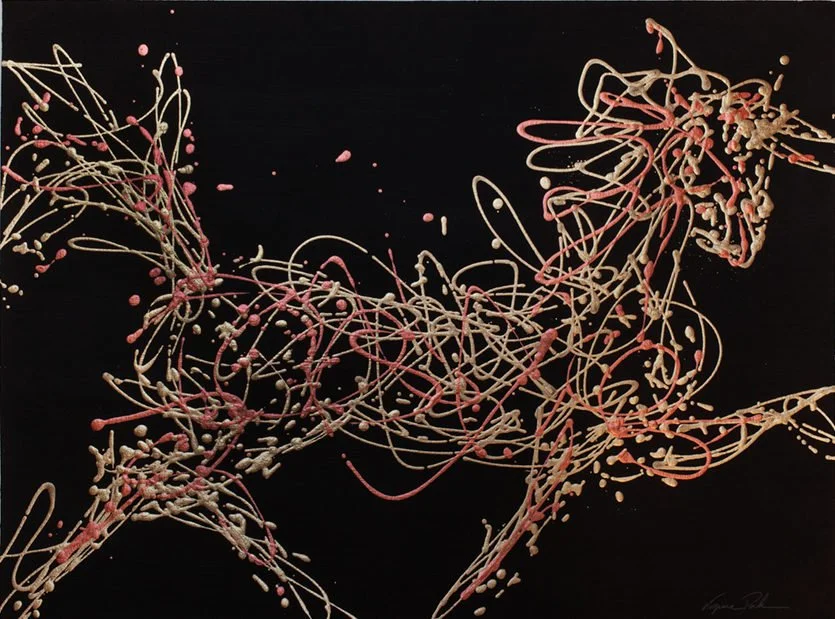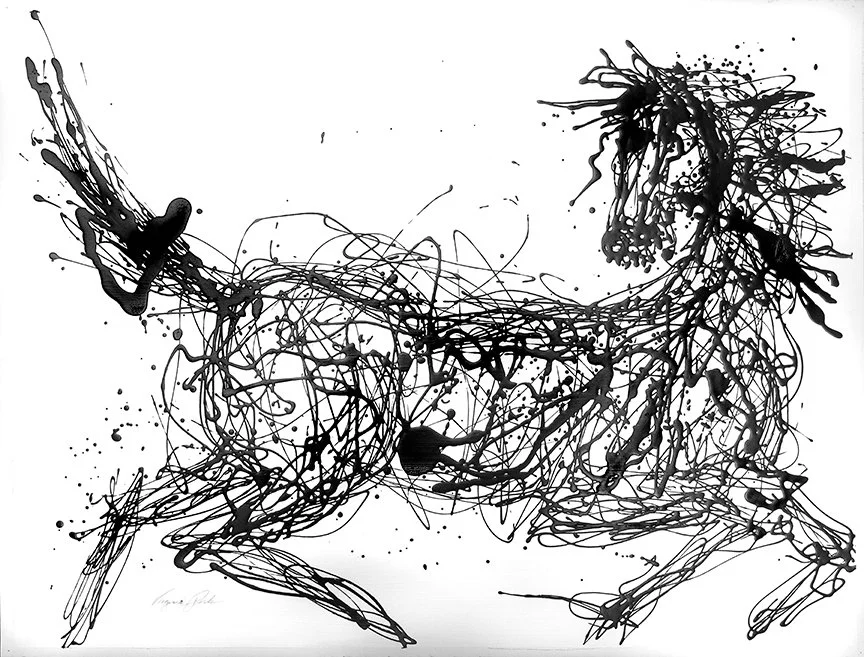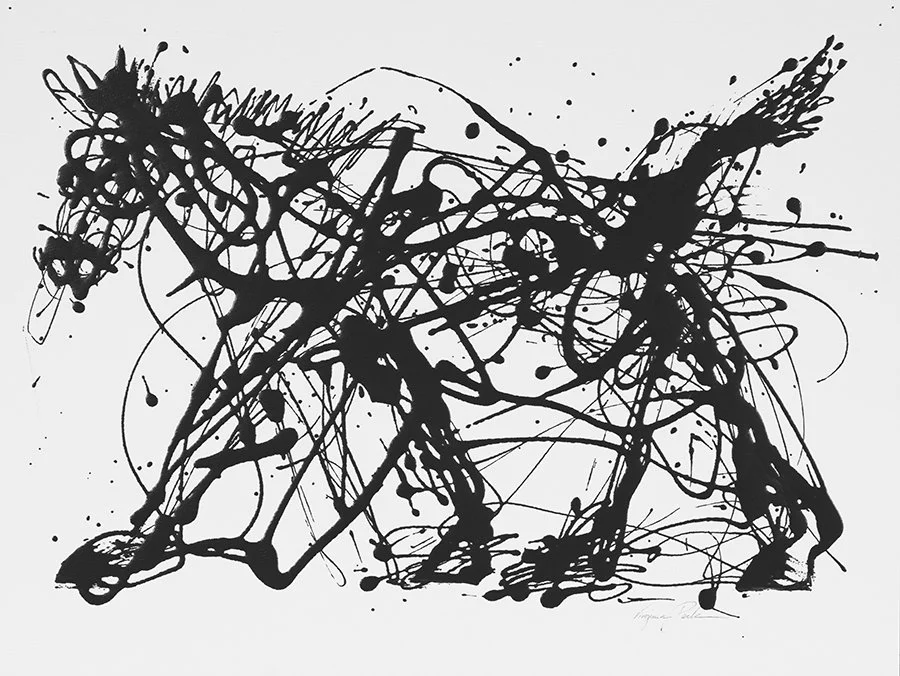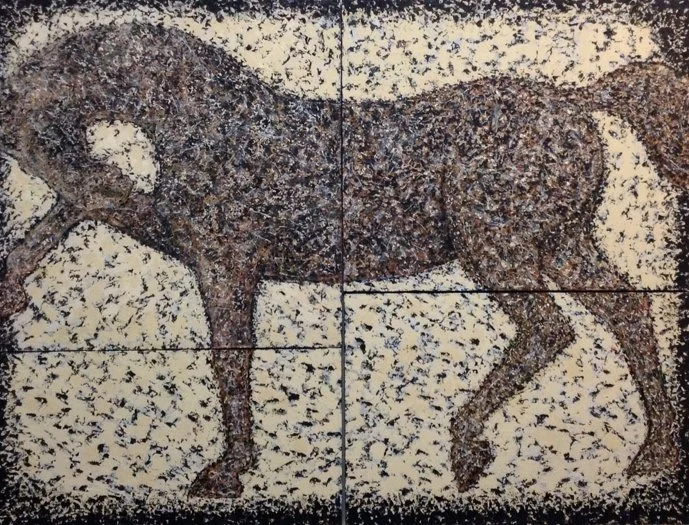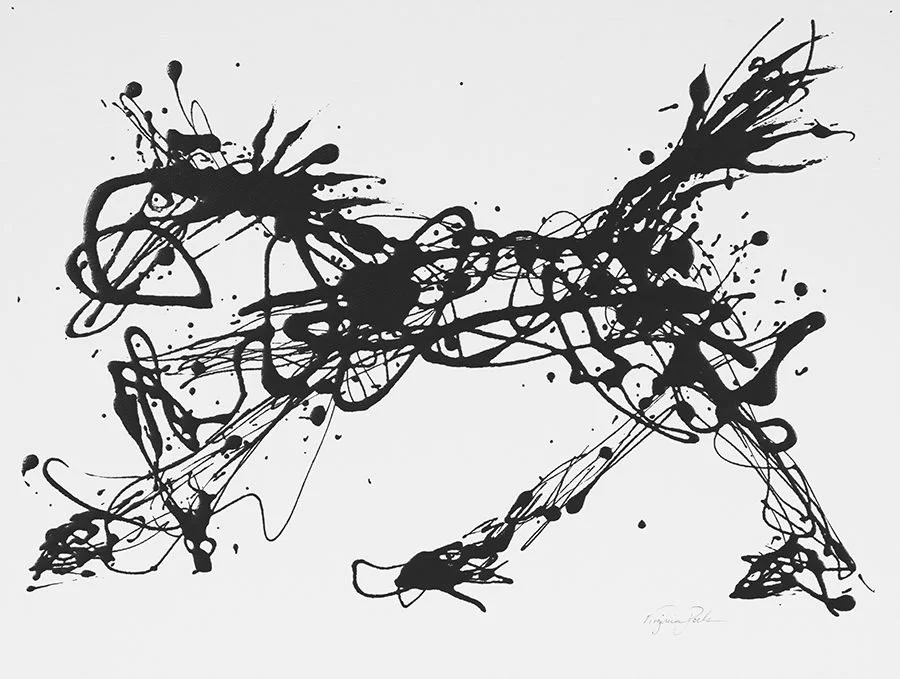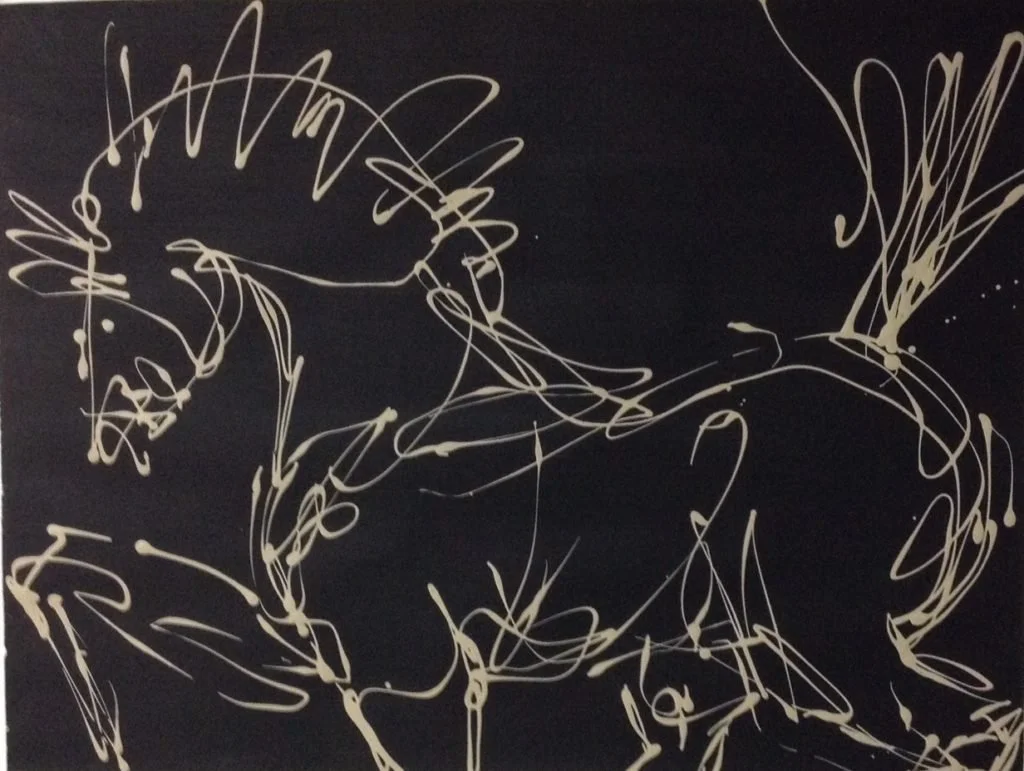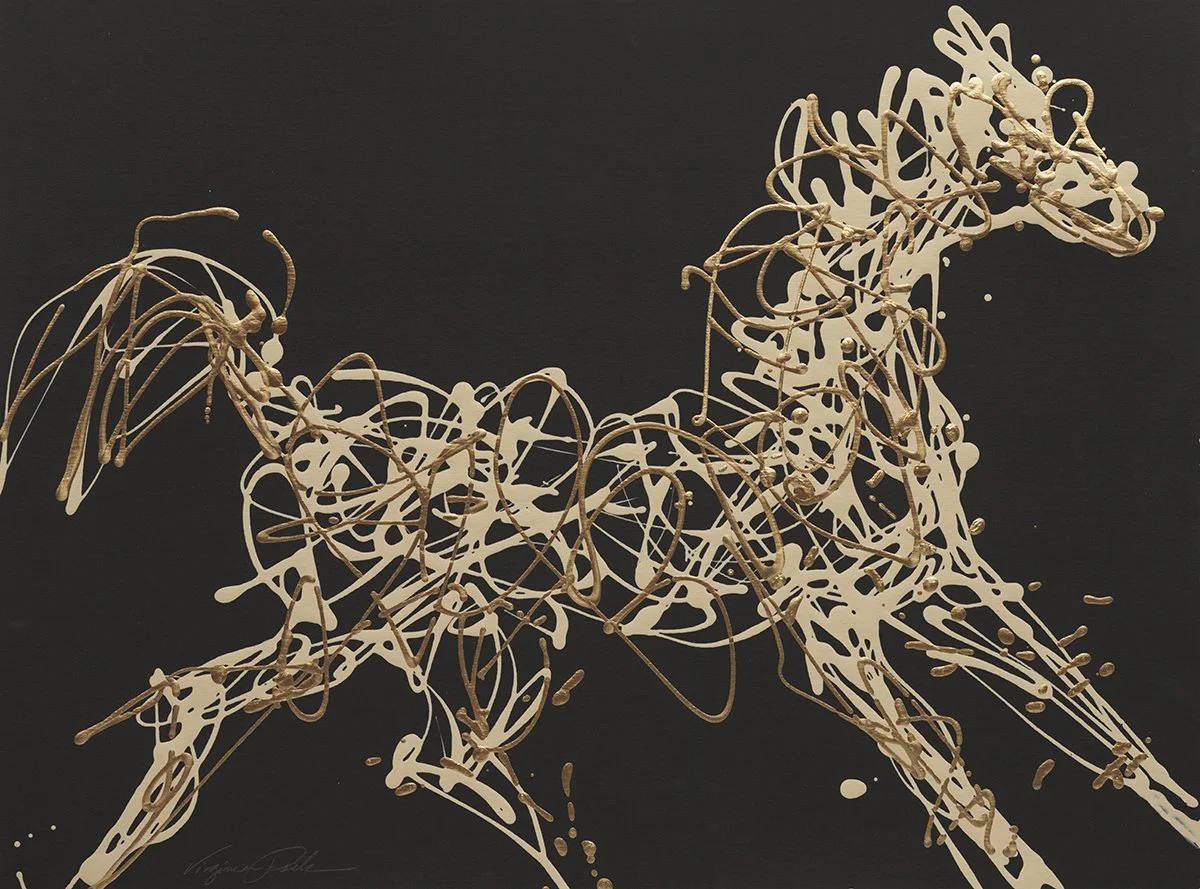Horses
Because of my love for horses, they were one of the first things I drew as a child. I voraciously read all the books about horses I could get my hands on, particularly the series by Walter Farley, and particularly those books illustrated by, Harold Eldridge. His horses were so elegant and exciting, with their long flowing manes and tails, and spoke to my young girl’s heart. I copied many of Eldridge’s illustrations, and they were a big influence at that time in my life.
For this body of horse paintings, I wanted to try using oil-based enamel house paint, like abstract artist Jackson Pollack used. I taped and gessoed good quality watercolor paper to the floor, dipped a wooden dowel in the paint, and then stood over the paper and dripped the paint, instinctively, in the shape of a horse.
I found that this technique lends itself well to the movement and energy of a horse in action. The oil-based enamel paint has an elastic, loopy consistency that is such fun to work with, but hard to control, which adds to its exciting mark making ability. The problem is that the paint is HIGHLY toxic, so I had to stop using it. I did try using a respirator, but it was too uncomfortable.
I found that this technique lends itself well to the movement and energy of a horse in action. The oil-based enamel paint has an elastic, loopy consistency that is such fun to work with, but hard to control, which adds to its exciting mark making ability. The problem is that the paint is HIGHLY toxic, so I had to stop using it. I did try using a respirator, but it was too uncomfortable.
The big, mural size, 4-panel horse painting consists of many layers of acrylic paint applied with a palette knife and dripped acrylic paint. Dividing it into four unequal panels I thought was more interesting than if they’d all been the same size, and also easier to work on than one huge panel, and practically, much easier to move.
